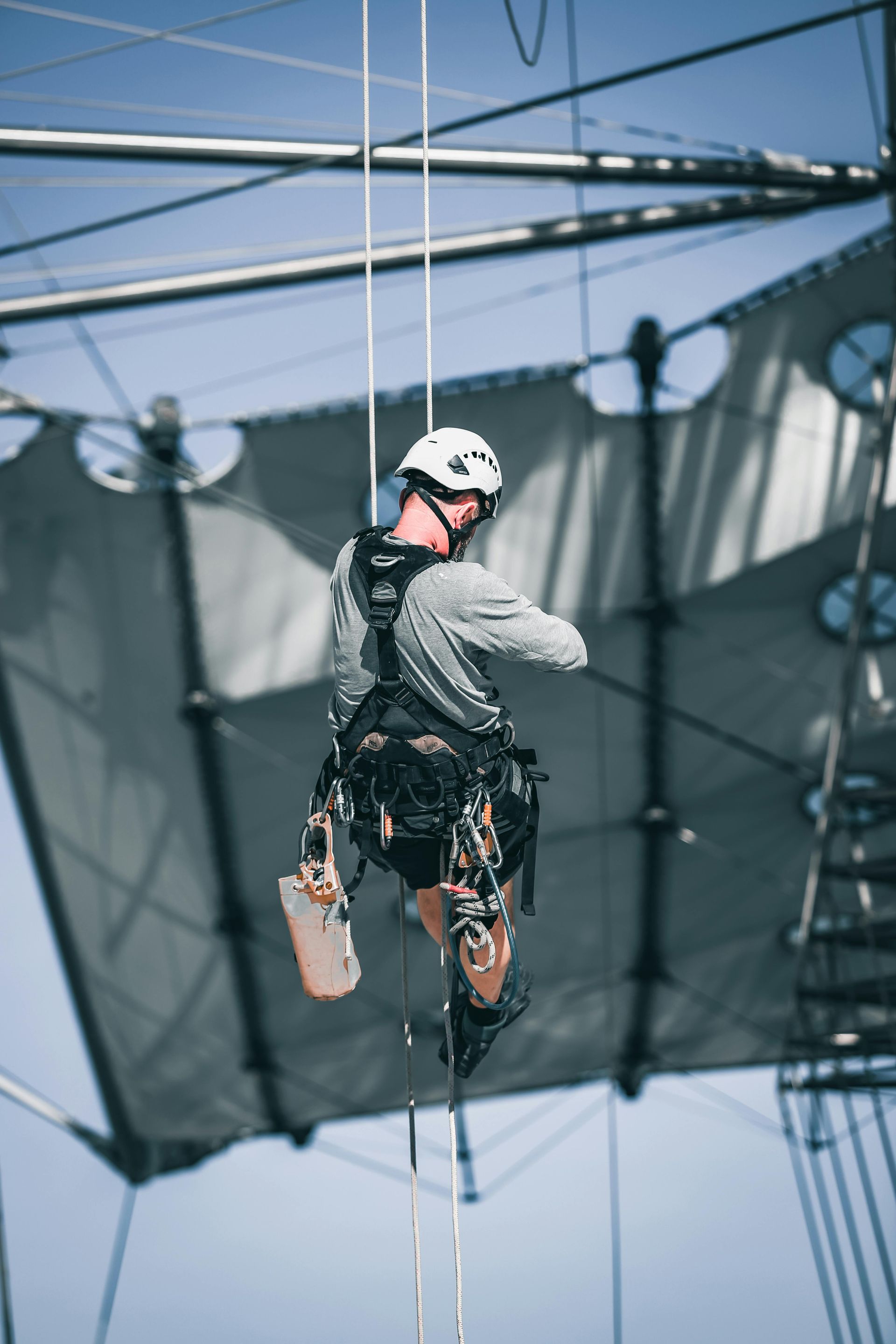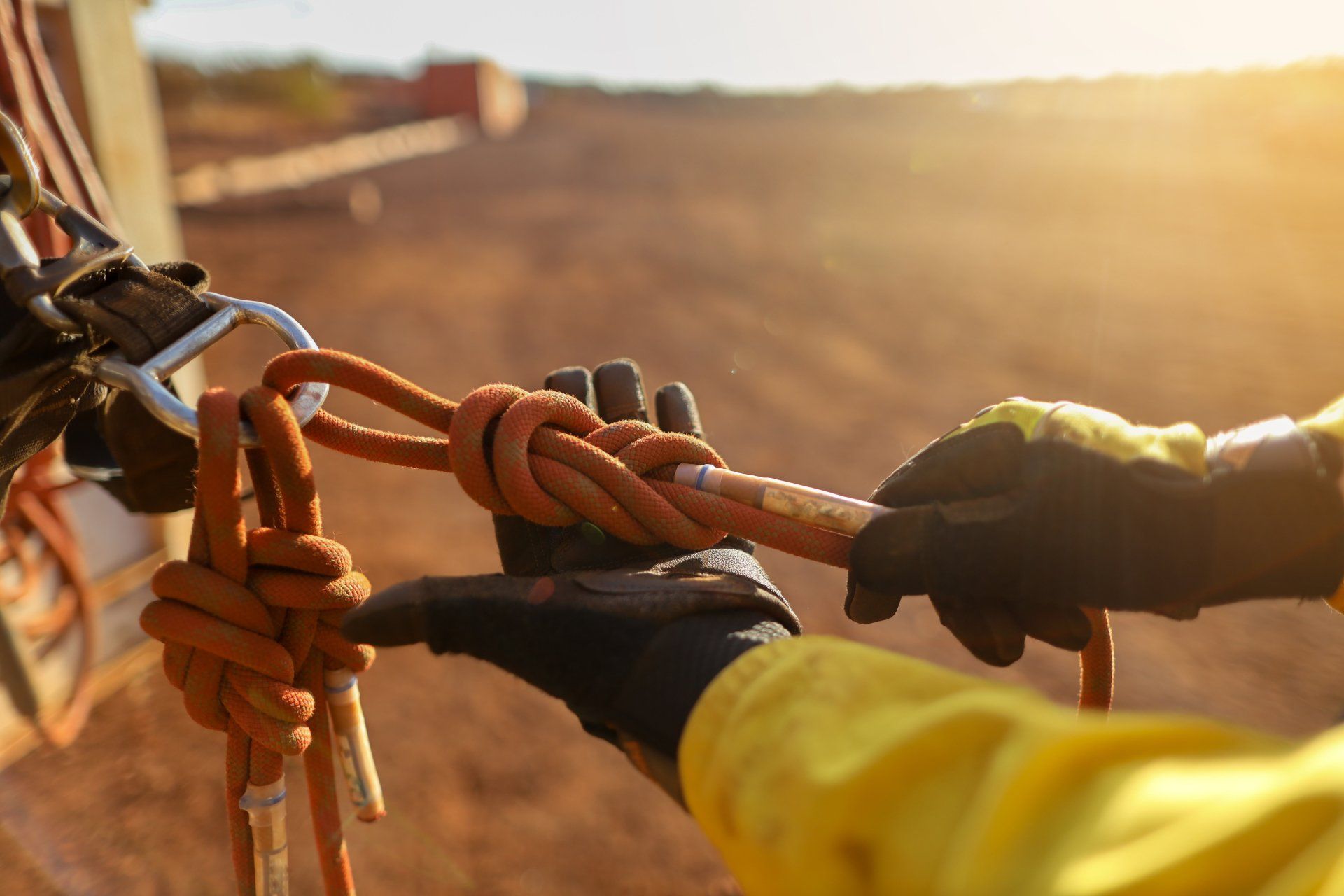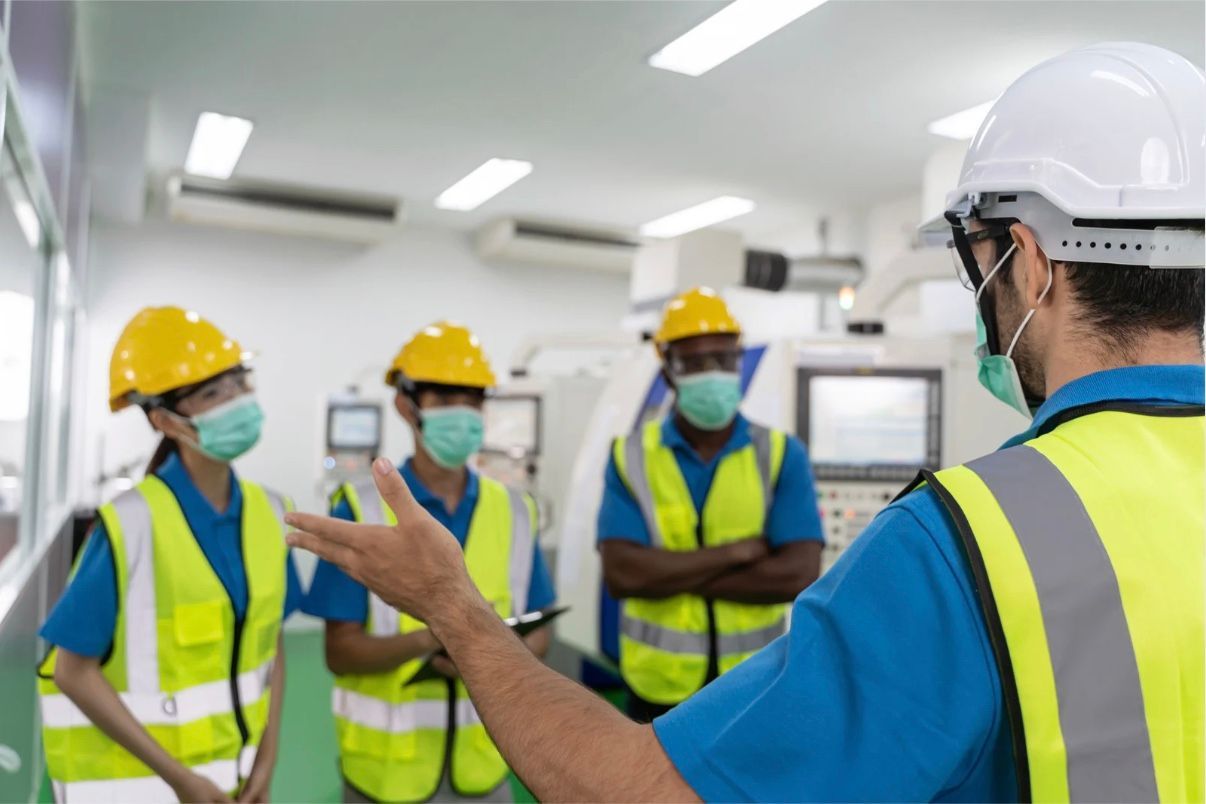Harness Training: Essential Knowledge for Rope Access and Working at Height

Harness Training: Essential Knowledge for Rope Access and Working at Height
In industries where working at height is part of daily operations, safety is paramount. From construction and maintenance to specialist rope access tasks on wind turbines, bridges, and high-rise façades, fall protection systems are a lifeline—quite literally. At the core of these systems is the safety harness. But simply wearing a harness is not enough; proper Safety Harness Inspection and User Training ensures that workers understand how to use, inspect, adjust, and rely on this equipment to keep them safe.
This blog explores the importance of harness training, the legal requirements in the UK, what training courses cover, and why harnesses are indispensable in rope access work.
Why Harness Training Matters
A harness is the link between the worker and their fall protection system. When used correctly, it distributes forces across the body, preventing serious injury during a fall. However, misuse, poor adjustment, or lack of inspection can turn a life-saving device into a dangerous liability.
Without proper harness training, workers risk:
- Wearing a harness incorrectly, which can cause suspension trauma or injury during a fall.
- Failing to identify damaged webbing, stitching, or connectors.
- Using incompatible lanyards or connectors, creating system weaknesses.
- Relying on outdated or non-compliant equipment.
Harness training goes beyond equipment handling—it develops a safety mindset, embedding the understanding that personal protective equipment (PPE) is only effective when used with knowledge and care.
Legal Requirements for Harness Training in the UK
In the UK, working at height is tightly regulated. Employers and employees must comply with specific legislation designed to prevent falls and protect workers. Harness training forms a key part of this legal framework.
The Health and Safety at Work etc. Act 1974
This Act places a duty on employers to ensure, as far as reasonably practicable, the health, safety, and welfare of employees. Providing harness training is part of fulfilling this duty, as workers must be trained to use equipment safely.
The Work at Height Regulations 2005
These regulations are central to fall protection requirements. They state that:
- Work at height must be properly planned and supervised.
- The most appropriate equipment must be selected and used.
- Employees must be competent or supervised by a competent person.
Competence is defined by training, knowledge, and experience. Harness training directly supports compliance by ensuring workers know how to select, use, and maintain harnesses correctly.
Personal Protective Equipment at Work Regulations 1992 (as amended 2022)
These regulations specify that:
- PPE must be suitable for the risks involved.
- Employers must provide training and instruction in the use of PPE.
- PPE must be properly maintained and replaced when necessary.
Harnesses fall under PPE, making harness training not optional but a legal obligation.
Industry Standards and Guidance
In rope access, additional industry standards apply:
- IRATA International Code of Practice (ICOP) sets training and operational standards for rope access work. Harness competence is embedded in all IRATA levels.
- BS EN 361: This British Standard specifies requirements for full body harnesses used in fall arrest systems.
- HSE Guidance INDG367 (Inspecting fall arrest equipment) outlines harness inspection requirements.
Employers who fail to provide adequate harness training risk prosecution, fines, and—most importantly—serious accidents.
What Does Harness Training Cover?
Harness training is designed to give workers the knowledge and confidence to use fall protection equipment correctly. A comprehensive course typically includes:
Understanding Legislation and Standards
Participants learn about the legal responsibilities of both employers and employees, including the Work at Height Regulations 2005. Training links theory to practice, helping workers understand why correct harness use is legally required.
Anatomy of a Harness
Trainees are introduced to the components of a harness:
- Webbing and padding
- Buckles and adjusters
- D-rings and attachment points
- Stitching and load paths
They learn how these components work together to keep them safe.
Fitting and Adjustment
A harness that does not fit correctly can cause:
- Increased injury risk in a fall
- Restricted circulation leading to suspension trauma
- Reduced freedom of movement during work
Harness training teaches workers how to:
- Select the correct harness for their body size and task.
- Don the harness correctly.
- Adjust straps to ensure a snug but comfortable fit.
- Check connection points for compatibility with lanyards and descenders.
Harness Inspection
Pre-use checks are critical. Workers learn to inspect for:
- Cuts, tears, and abrasion in webbing.
- Damaged or missing stitching.
- Cracked, bent, or corroded buckles.
- Clear legibility of identification labels and serial numbers.
Harness training also covers thorough periodic inspections, typically every six months by a competent person, in line with manufacturer guidelines and HSE expectations.
Using Harnesses in Different Systems
Harness training introduces workers to the role of harnesses in various fall protection systems:
- Fall arrest: Stopping a fall in progress.
- Work restraint: Preventing a fall by restricting movement.
- Work positioning: Supporting the worker while allowing hands-free work.
- Rope access: Twin-rope systems for access and safety.
Emergency Procedures and Rescue
Harness training emphasises that falls can still happen, and workers must know what to do in emergencies. Training covers:
- Recognising signs of suspension trauma.
- Raising the alarm.
- Understanding basic rescue principles.
Record Keeping and Traceability
Finally, trainees learn about equipment logs, inspection records, and the importance of documentation for legal compliance.
Harness Training in Rope Access
While harnesses are vital for anyone working at height, their role in rope access is even more critical. Rope access relies entirely on harness systems, as technicians are suspended and manoeuvring on ropes for extended periods.
Rope Access Harness Features
Unlike standard fall arrest harnesses, rope access harnesses often include:
- Sit harness elements for comfort during suspension.
- Chest attachments for vertical mobility.
- Additional padding for extended wear.
- Multiple gear loops for tools and equipment.
The Role of Training
In rope access, harness training is not a one-off. It is embedded in every stage of professional development:
- IRATA Level 1: Introduction to rope access harness systems, fitting, and inspection.
- IRATA Level 2: Advanced use, complex rigging, and rescue techniques.
- IRATA Level 3: Supervisory competence, equipment management, and rescue planning.
Harness competence underpins every manoeuvre, from ascending ropes to conducting rescues.
The Consequences of Poor Training
Without proper harness training in rope access, technicians risk:
- Suspension trauma due to poor adjustment.
- Falls caused by incorrect attachment.
- Equipment failure from unnoticed harness damage.
- Reduced operational efficiency and confidence.
In rope access, lives depend on harness training being thorough, practical, and continually reinforced.
The Vital Role of Harnesses in Workplace Safety
Harnesses are not just PPE—they are the foundation of safe access in high-risk industries. Some examples:
- Construction: Harnesses protect scaffolders, steel erectors, and roof workers.
- Wind Energy: Rope access technicians rely on harnesses for turbine inspection and repair.
- Offshore Oil and Gas: Harnesses support safe transfer and maintenance operations.
- Infrastructure Maintenance: From bridges to stadiums, harnesses enable safe work in challenging environments.
Statistics from the HSE show that falls from height remain the leading cause of workplace fatalities in the UK. Harness training is a proven method to reduce these risks, saving lives while maintaining efficiency.
Why Choose Dangle’s Academy?
Here at Dangle, we pride ourselves on offering a wide range of professional and comprehensive inspection, access, coatings, and composite (IACC) industrial services and training courses to cater to the needs of both the private and public sectors. Our dedication to providing high-quality work at height solutions and training has helped us establish a strong reputation in the industry.
With a team of highly skilled and experienced professionals, we are committed to delivering exceptional results that not only meet but exceed our clients' expectations. Our on-site working at height services are designed to minimise maintenance costs in the long and short-term, allowing our clients to save on valuable resources.
Located in Belfast, Northern Ireland, our headquarters serve as the centre of our operations across Ireland. However, we also have a Dangle office based in Scotland, ensuring that we can extend our services to a wider clientele across the United Kingdom. No matter where you are located, our team is always ready to assist you with your industrial maintenance or training needs.
If you would like to learn more about how our dedicated team can help you, we encourage you to get in touch with us today. Our friendly and professional staff are always available to provide you with the information and support you require.


